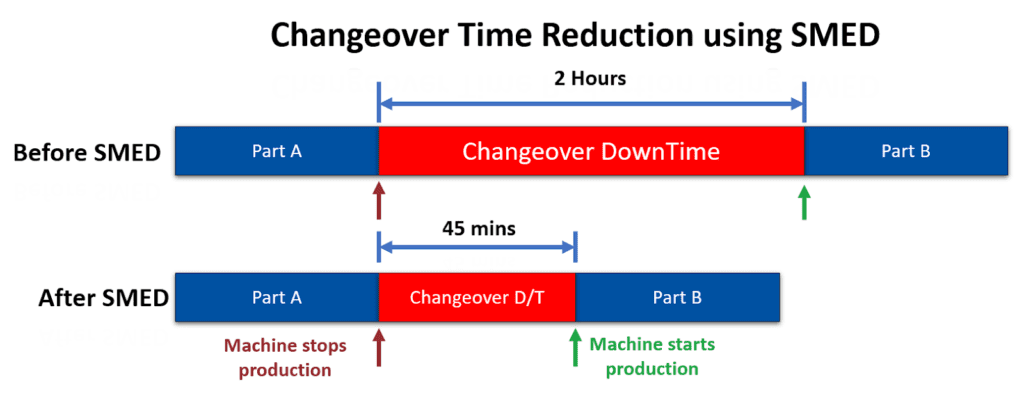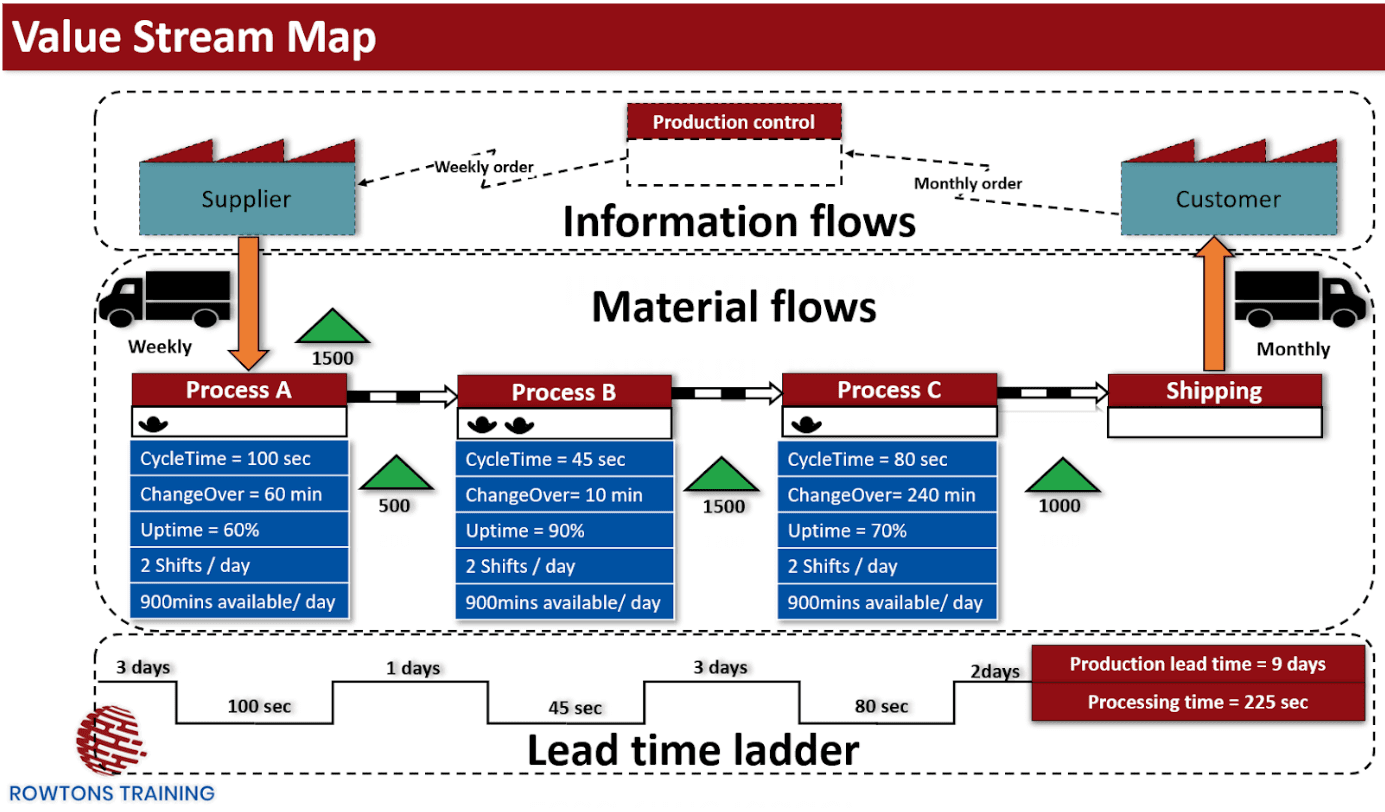What is SMED?
“SMED” is an improvement tool methodology for analysing and reducing changeover times and cycle times. It is a way of studying the current method, breaking it down into its sub-parts and systematically evaluating each of them through a process of sequenced steps in order to dramatically reduce the overall time of the process. “SMED” is an acronym which stands for or ‘Single Minute Exchange of Dies’ – a thoroughly obscure and unhelpful name sadly keeps it from getting the hugely applicable awareness it deserves. The name originates from the process of improving the changeover time of dies, a type of forging tool. SMED is an incredibly powerful tool, traditionally used within the Lean improvement philosophy, for businesses looking to reduce their changeover and cycle times of just about anything!
For more information about SMED and its use in business systems improvement, check out my video on Lean Superpower for Changeover and Cycle Time Reduction.
What is a Cycle Time?
A ‘cycle time’ is the time it takes a process to do one cycle, also sometimes called ‘processing time’. It is most relevant when an identical process is happening repeatedly such as a machine process in a factory production line or even a chef preparing a standard meal (although I discovered chefs hate being compared to industrial processes, haha)
What is a Changeover?
The ‘changeover time’ is the time it takes from in between making one part and the next part, i.e., the time taken for the first process to stop and set up the next process. This could be the same factory machine switching from making a run of “part A”s to “part B”s or our happy chef switching from making a batch of bread rolls to making a batch of meat pies.
DISCOVER THE “FORGOTTEN FUNDAMENTALS” OF OPERATIONS MANAGEMENT”
What is the Aim of SMED?
The aim of SMED is to reduce cycle times and changeover times using a systematic, sequential process.
Business aim to reduce cycle times in order to make a process faster. Businesses aim to reduce changeover times in order to give the business extra flexibility, and to either increase capacity by using the saved time or increase the number of changeovers giving them smaller batch sizes and greater responsiveness. Reducing the number of changeovers allows a business to reduce their lead times, reduce the work in progress inventory levels and increase responsiveness to customers’ demands.
Above we can see a before/ after timeline of some generic producing asset, perhaps a machine in a factory, or perhaps a chef… If we are using SMED to reduce Changeover times, our aim is to improve our changeover process so we can go from effectively making “part A” to “part B” with less non-productive Changeover Downtime (D/T) in between.
Reducing the Changeover or Cycle Time Using SMED
A business can reduce the changeover time or the cycle time using seven steps:
1. Mapping the process
2. Removing unnecessary activities
3. Converting internal steps to external steps
4. Doing the internal steps simultaneously
5. Speeding up the remaining internal processes
5. Speeding up the remaining external processes
6. Repeating the process all over again
- Mapping the Process
The first step is to map the process. It is a good idea to take a video of the process for analysis, so that you can write down every step. Ideally, the process should be put into a Gantt chart in order to see all of the changeover / cycletime steps visually and how they fit together.
- Remove Unnecessary Activities
The next step is to remove any unnecessary activities. This will involve asking the operators, supervisors and process engineers, as well as yourself, if each step is really necessary. If not, stop doing it! (you’d be amazed how many quick wins you can find from old, legacy processes)
- Convert Internal Steps into External Steps
The third step of the process is to convert internal steps into external steps. This means moving activities that are currently done inside the changeover time (or within the critical path of the producing asset, in the case of cycletime) and doing them either before or after the process has stopped. External steps can be done for preparation before the changeover.
- Do Internal Steps Simultaneously
Some of the steps that are internal can be done simultaneously, in order to reduce the critical path.
- Speed Up or Shorten the Remaining Internal Processes
The next step is to speed up or shorten the remaining internal processes, after some have been eliminated altogether, converted to external steps, or being done simultaneously. These remaining internal steps could be made faster by better programming, ergonomic changes or engineering re-designs.
- Speed Up or Shorten the Remaining External Process
After this, the business can look at speeding up or shortening any external processes; (the processes that are being done before or after the changeover). While this won’t speed up the changeover itself, it will help the changeover operators who may not have the time to carry out all of the various tasks without improving the external process steps.
- Repeat the Process
The final step is to repeat the entire process. SMED is an iterative process. We need to go through the whole cycle several times as new opportunities become visible / possible after earlier rounds of improvement. These iteration loops should be “both” done on paper when redesigning the process before any actual “real-world” change implementation has happened and also after some real-world changes have been implemented and we’ve had a chance to see how things are working out.
Iterations of SMED for Lean Operations
SMED is an iterative process. There may be new opportunities that couldn’t be seen the first time that the process was analysed, when the process was initially very different. The process could be repeated several times in order to make the biggest difference.
Business Systems Improvement with Rowtons Training
If you want to learn more about operations management, business systems improvement and lean operations, take a look at the range of video training courses available from Rowtons Training. In addition, check out the numerous free resources including articles and videos here.
Crack On!








